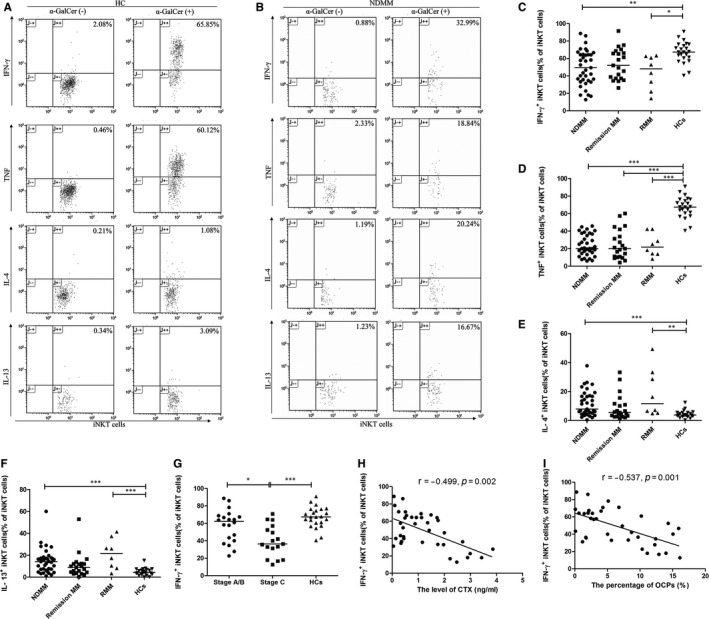Figure 2.

The level of IFN‐γ produced by iNKT cells was impaired and significantly associated with bone disease in newly diagnosed multiple myeloma (NDMM) patients. A,B, The expression of Th1 cytokines (IFN‐γ, TNF) and Th2 cytokines (IL‐4, IL‐13) by iNKT cells in healthy controls (HCs) and NDMM patients were examined by flow cytometry after stimulation with α‐GalCer. The percentages of IFN‐γ+ (C), TNF + (D) iNKT cells were significantly lower in NDMM and relapsed/refractory MM (RMM) patients than in HCs. The percentages of IL‐4+ (E) and IL‐13+ (F) iNKT cells were significantly higher in NDMM and RMM patients than in HCs. G, The percentages of IFN‐γ+ iNKT cells were strongly lower in NDMM patients with Stage C bone disease than with Stage A/B bone disease. H, The percentages of IFN‐γ+ iNKT cells was significantly correlated with the level of carboxy‐terminal cross‐linking telopeptide of type I collagen (CTX) respectively by Spearman's correlation coefficient. I, The percentages of IFN‐γ+ iNKT cells were significantly correlated with the percentages of osteoclast precursors (OCPs) respectively by Spearman's correlation coefficient. (Medians of each group were compared using Kruskal‐Wallis test followed by all pairwise multiple comparisons; *P < .05; **P < .01; ***P < .001)
